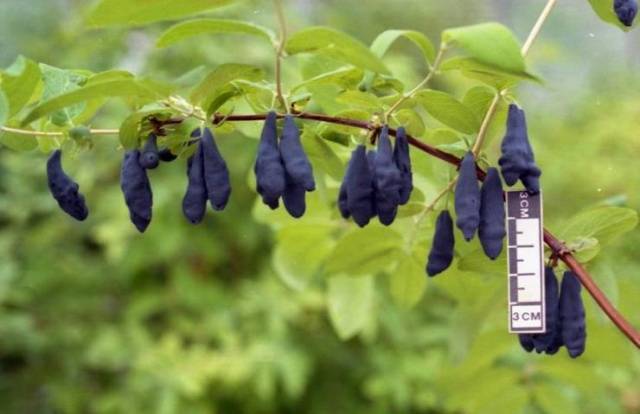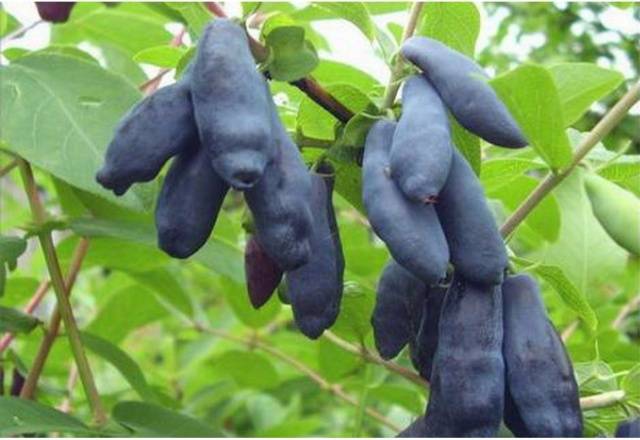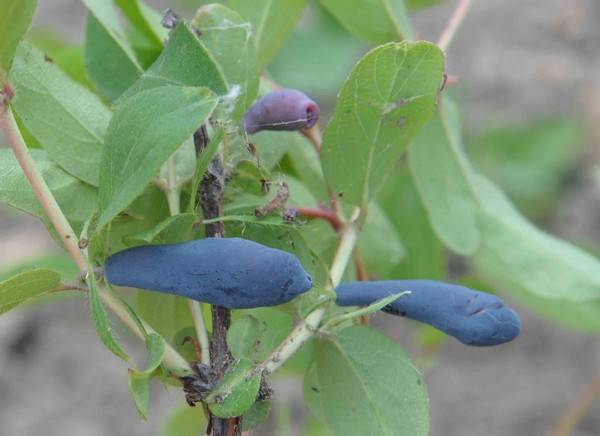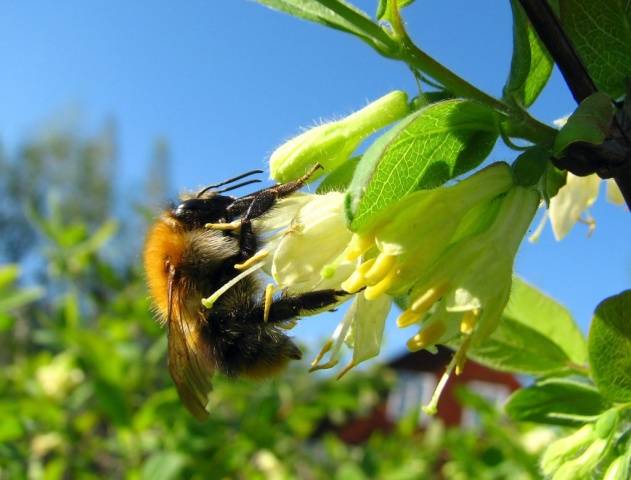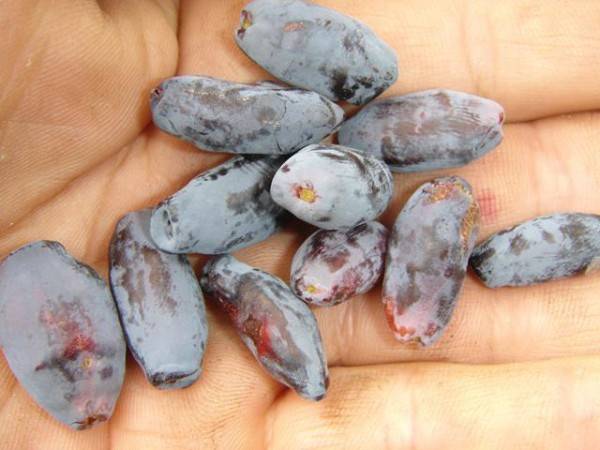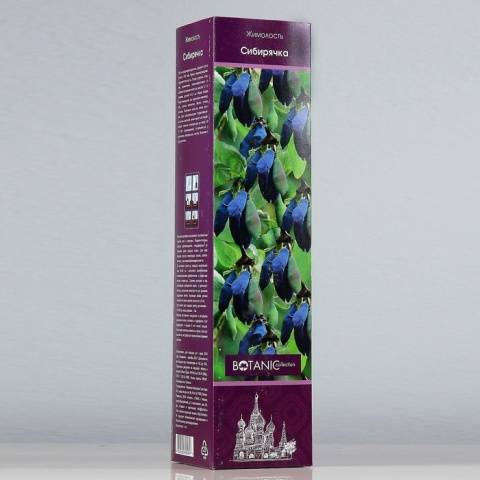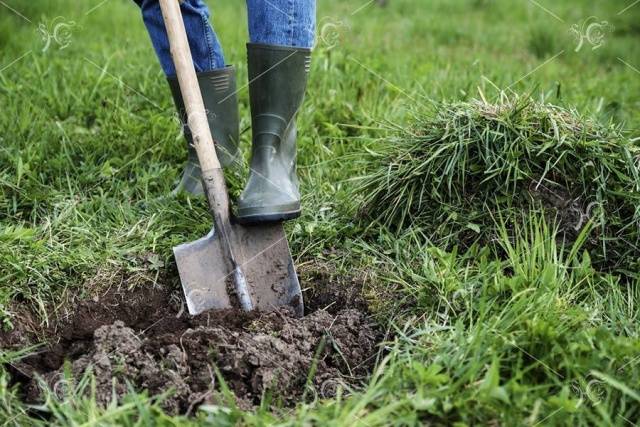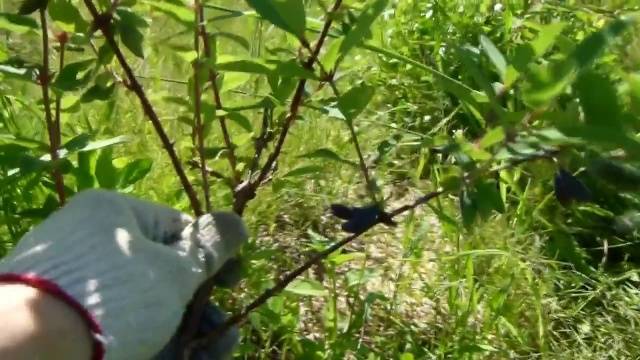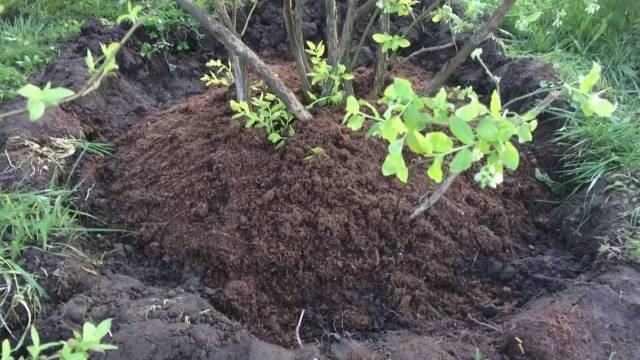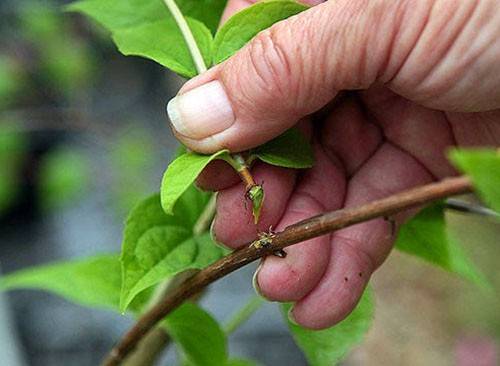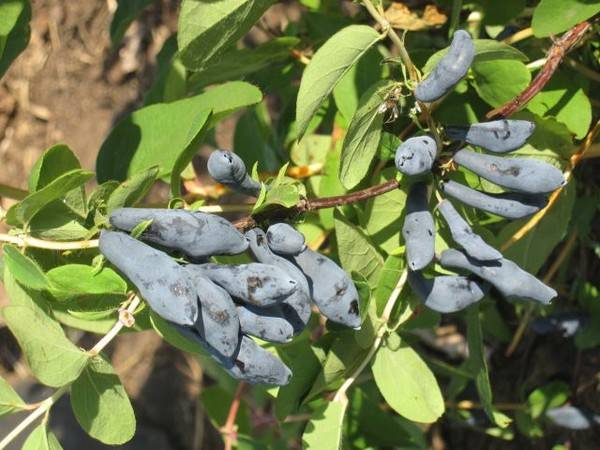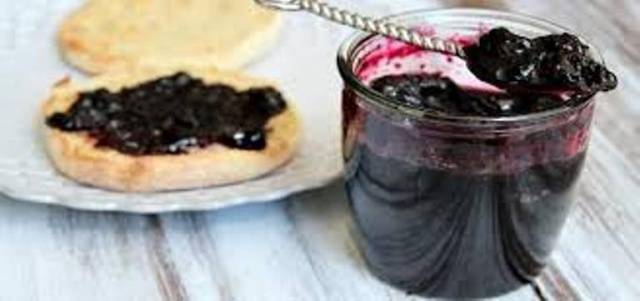Content
Modern varieties of honeysuckle allow you to grow tasty and healthy berries, not only in personal plots. More and more farmers are paying attention to this crop. Previously, it was unattractive for cultivation in large areas - the fruits crumbled, and their taste and size left much to be desired.
Most of the 21st century honeysuckle varieties have large sweet berries firmly attached to the branches, making them suitable for manual and mechanized harvesting.
Description of the variety
The Sibiryachka variety is not considered the newest, although it was registered only in 2000. This hybrid was obtained from Turchaninov's and Kamchatskaya's honeysuckles by Bakcharsky FSUE, located in the Tomsk region.
Specifications
A bush with an oval crown, medium height, moderately spreading - it reaches 1.6 m in height and 1.4 m in width. The shoots of Sibiryachka honeysuckle are curved, the top hangs down. Mature branches are brown with peeling bark.
The berries are drop-shaped, dark purple, with a whitish waxy bloom. Each weight ranges from 1.0-1.4 g. Fruits of the Sibiryachka variety are among the tastiest and sweetest among edible honeysuckles, their tasting score reaches 5 points.
The berries ripen early and amicably - only one harvest is needed. The average yield of Sibiryachka honeysuckle from an adult bush is 3.1 kg, under favorable conditions - up to 3.7 kg. The fruits are well attached to the branches, they do not crumble when ripe, but they can come off with damage, therefore they are not suitable for freezing.
Pollinators
Edible honeysuckle is self-fertile, and Sibiryachka is no exception. To obtain a decent harvest, cross-pollination by bees or bumblebees with pollen of other varieties is necessary. Otherwise, the bushes will bloom, but will give only a few small berries.
You can plant several of any other varieties next to Sibiryachka, but Tomichka, Memory of Gidzyuk or Narymskaya are best suited as pollinators. It is not necessary to attract specially bees and bumblebees to planting honeysuckle - it is a good honey plant, it itself lures beneficial insects into the garden.
Advantages and disadvantages
Sibiryachka is an excellent variety for processing and fresh consumption. Among its advantages:
- Early ripening.
- Fertility of the variety. It is fashionable to try the first berries in 1-2 years after planting honeysuckle.
- Good taste - tasting score 5 points.
- Stable fruiting.
- Large berries.
- High yield of the variety.
- Honeysuckle is extremely winter-hardy, it can withstand frosts of more than 50 degrees, the ovaries do not fall off at minus 7.
- The Sibiryachka variety does not crumble after ripening.
- You need to harvest once.
- Durability and undemandingness - with proper planting, honeysuckle bears fruit for 30 years.
Sibiryachka has a significant drawback - its berries are so tender that when harvesting, it is not always possible to get a dry separation. This reduces transportability and makes the variety unsuitable for freezing.
Accommodation on the site
Honeysuckle is not capricious, the secret of its successful cultivation is to buy healthy planting material and place it correctly on the site.
The choice of planting material
Saplings at the age of 2-3 years take root best of all. You need to buy them in large garden centers or directly from manufacturers. Planting time - late summer or early autumn. In the spring there is no guarantee that all honeysuckle seedlings will take root, and fruiting will come a year later.
Make sure the root is healthy and the branches are firm. The Siberian woman is distinguished by curved shoots - this feature will help determine the varietal correspondence.
Choosing a suitable seat and landing
Only a sunny area is suitable for planting honeysuckle - it is impossible to get a crop in the shade. You can not place the berry in lowlands or ravines - the accumulation of cold air and stagnant water will reduce productivity, and can lead to decay of the root system.
Honeysuckle can grow on any soil, but prefers slightly acidic, loose, fertile. Only sandstones are not suitable, there you need to add 2 buckets of organic matter to the planting pit. Lime or dolomite flour is added to an overly acidic soil.
Pits are prepared with a size of 40x40x40 cm, a bucket of organic matter is added to the upper fertile soil layer, 50 g of phosphate and potassium fertilizers each. For poor soils, the amount of starting feeding should be large.
The standard planting of honeysuckle is 1.5 m in a row, 2 m between beds. Different sources may offer other schemes, you need to stick to the one that suits you.
The planting pits are filled with water, allowing moisture to be absorbed. In the middle, a mound of fertile soil is poured, the roots are carefully spread around it, covered with soil, lightly tamped. The neck should be buried by about 5 cm.After planting, the bush is watered abundantly, the trunk circle is mulched with humus or peat, in their absence, dry soil is suitable.
Growing honeysuckle
Growing honeysuckle is easy - it is not a capricious crop. To get a good harvest, it is enough to plant several varieties nearby.
Young plant care
First of all, the seedlings require sufficient watering. If there is a lack of moisture, the young plant may die, but even if this does not happen, the honeysuckle will hurt, and in the future it will not give a good harvest. A day after rain or watering, you need to loosen the soil to a depth of 5-8 cm in order to improve the flow of oxygen to the roots.
The first 2 years after fruiting, the honeysuckle is not fed - the fertilizers that were added to the planting pit are enough for it. In the spring (you can directly in the snow), a bucket of water with a solution of ammonium nitrate or urea is brought under each bush.
Adult plant care
Honeysuckle care consists in weeding, watering in dry weather and loosening the soil. Every spring it is fed with nitrogen fertilizers, in the summer - with a full mineral complex, in the fall - with phosphorus and potassium for laying the next year's harvest, successful wintering.
Pruning and wintering
Honeysuckle is a plant of the North, varieties are created specifically for cold climates, it does not need shelter for the winter. Until the age of 15, the bush is not cut off, only dried or broken shoots are removed. Then the oldest skeletal branches are cut out at ground level. After 20, but only in case of a significant decrease in yield, honeysuckle is cut, leaving hemp 15-20 cm. During the season, it grows well and can bear fruit for another 5-10 years.
Reproduction methods
Honeysuckle can be propagated in a variety of ways. Some are available to amateur gardeners, others are of interest only to breeders:
- Seeds. Germination is good, but the berries are obtained only with cross-pollination. Because of this, the seedling does not retain maternal characteristics. This method of reproduction is used when creating new varieties; it is not interesting for amateur gardeners.
- Cuttings. Honeysuckle can be obtained from green or lignified stem pieces. Rooting requires a greenhouse or greenhouse and the use of rooting hormones. For those who like to comply with all the necessary conditions, it is difficult, only 20% of cuttings survive.
- Vertical and horizontal layering. The method is suitable for self-breeding of honeysuckle.
- By dividing the bush. Amateur gardeners can easily get a few new plants from young, well-grown honeysuckle.
Growing problems
Honeysuckle is so rare that it is worth mentioning only powdery mildew - it can appear in a damp, cool summer. You can fight the fungus with the help of fungicides or the biological product Fitosporin. Honeysuckle pests and protection measures are presented in the table.
Insect pests | Signs of defeat | Protection methods |
Leaf rollers | During the ripening period of the crop, caterpillars damage leaves, green shoots | Twice, with an interval of 10-14 days, the bush is treated with an appropriate insecticide or biological drug |
Aphids | Affect young leaves and shoots, sucking out cell sap | |
Willow shields | Dense elongated growths attach to the bark and draw juice from it |
Among the possible problems, re-flowering stands out, from which the Sibiryachka variety is not immune. This happens most often if the weather is warm for a long time. Honeysuckle retires early and can spontaneously enter the second wave of vegetation in late summer or early autumn. Harvest from late flowers will not work, but the next season will not please with berries. It is recommended that you pick off the buds as soon as they are found.
Testimonials
